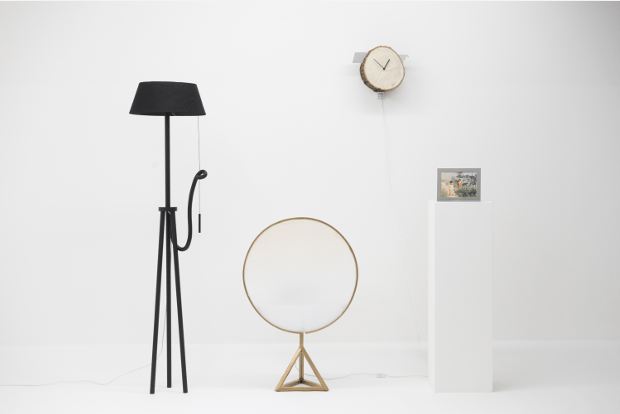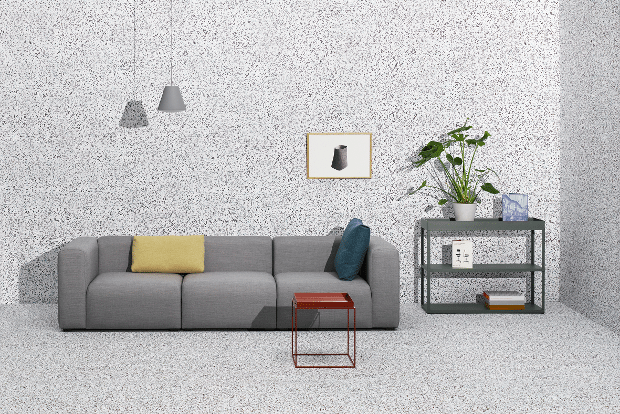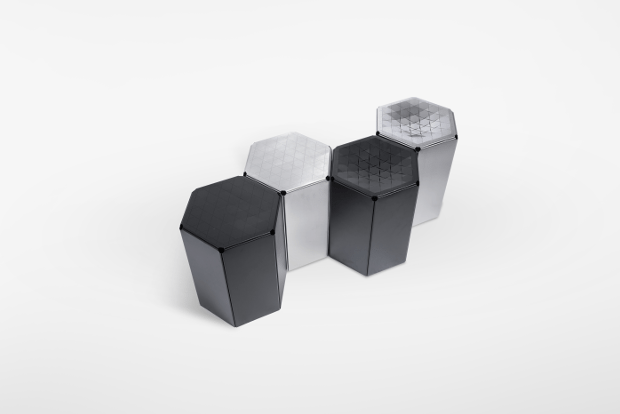
Designers from all over the world are gathering together to present their home décor installations to the public for the much-anticipated annual exhibition Design Shanghai that’s going on now through March 12. With a roster of Chinese-designed furniture and fixtures on display alongside presentations by leading international brands in the industry, visitors have a chance to both witness the evolution of talent and trends and visualize emerging designers' work in their own homes.

Design Shanghai co-creative directors Ross Urwin and Darrel Best are bringing to the forefront of the event one of the major trends in China's design market: traditional Chinese craftsmanship. This especially comes together in an installation by the internationally recognized Jamy Yang, who is showcasing a collection from his private industrial design museum in Shanghai that blends Chinese traditional handicrafts with more modern aesthetics, reflecting what Urwin and Best call a “newfound individuality, confidence, and pride in Chinese design.”
Traditional elements are also blended with new media and technology in an exhibition by Elle Decoration magazine and digital agency What's Media Lab that shows how virtual reality can play a role in design and lifestyle.
Up-and-coming Chinese designers are prevalent this year and include the winner of last year's AD China x Design Shanghai Emerging Designers Award, Chen Furong. Chen is the co-founder of WUU, a contemporary home décor brand based in Xiamen that re-imagines ordinary home and office accessories and furniture using concrete and metal. Following a recent show in London, Chen is showcasing his latest furniture collection and a selection of innovative light fixtures.

Well-known global brands like Swarovski and Danish concept design store HAY have installations at Design Shanghai as well. HAY opened a shop in Shanghai in 2014 and some products by the Danish label have also made their way elsewhere in China via other multi-brand boutiques, one sure sign there is a home décor scene outside of Ikea that is becoming more accessible to the growing middle class in China. HAY is only one of a series of design-centric concept store openings throughout the mainland in the last few years—The Backroom, a Chinese-owned shop that stocks furniture and lifestyle products by international brands, opened in Shanghai in 2013 and in Beijing in 2015, and ZaoZuo, an online furniture and lifestyle brand with accessible price points, launched late last year.

Ahead of the events unfolding this week, Jing Daily talked with Design Shanghai's co-creative director Ross Urwin over email about China's quickly evolving design scene and what to expect from the millennial generation of Chinese consumers.
Almost half of the designers at Design Shanghai are Chinese. What has led to such an increase?#
Design Shanghai is simultaneously a celebration and a reflection of the thriving creative industries market that has been emerging in China in recent years. The pace and scale of China's economic transformation has provided the perfect environment for the rapid growth of the country’s creative sectors, allowing enterprise, creativity and innovation to flourish.
Recent figures show that the number of interior designers in mainland China has increased to 600,000, while the number of creative studios, including architecture practices, interior design companies, and property development firms, has risen to 200,000. The total number of practitioners stands at over 10 million.
This dynamism is definitely reflected in the large number of Chinese designers participating in the 2016 edition of Design Shanghai. The growth in the number of Chinese brands taking part in the event is not only indicative of the flourishing Chinese industry but also of Design Shanghai’s desire to support the local design sector.
What has changed in the last two years in the design and home décor scene in China?#
Trends in lifestyle that often take many years to reach the masses elsewhere seem to occur at a much faster pace here in China. I believe the design and home décor scene has certainly evolved in the past few years. There are many more local designer brands launching and gaining international respect. With shows such as Design Shanghai inspiring visitors and introducing new and exciting design brands, the lifestyle industry has developed incredibly for the past two years, and continues to grow within the region.
What are Chinese consumers of design looking for right now?#
We believe Chinese consumers have become more selective in their choices for design these days. Compared to when we first arrived in the region eight years ago, there has recently been a huge influx of both international and home grown contemporary design brands, which are launching their new collections. There is a keen desire for quality and uniqueness in design products.

The concept of brands creating a certain lifestyle and not just selling individual products seems like it's becoming increasingly important to Chinese consumers. Where do you think the industry in China is at with this?#
There is most definitely a shift happening here with respect to lifestyle concepts being sold to the consumer. Many brands now understand how important this is for customers, and therefore create inspiring environments within their stores.
Do you see any differences in how the affluent millennial generation views home décor versus their parents' generation?#
We have seen incredible shifts in the way the younger generation view design and home décor. There are many elements that have supported this transition, with exposure being probably the most significant.
The younger generation is well-traveled and has the opportunity to experience international lifestyle interior concepts, stores, and cultural activities across the globe. The significant amount of new publications, websites, and blogs focused on home interiors, fashion, and lifestyle trends is certainly a great source of inspiration.
How will virtual reality change the design industry in China?#
We believe that this is most certainly going to affect the way people follow lifestyle trends and purchase design in the future. The popularity of selling virtual concepts to the end user is something every designer or brand needs to consider.
What are some of the highlights of the your 10 influential and emerging designers this year selected by AD China?#
Among my favorites is the Basket Table by Mario Tsai, where the table top is very light and can be moved like carrying a basket, and the AO Chair by BUI Studio. AO Chair has a flat surface, but as people sit on it, the flat surface will arc because of the pliability of the material. The hexagonal pattern will “grow” to the edges.
It’s also worth mentioning Yuue design, which created Balancer 2, a really interesting minimalistic floor lamp using a simple and elegant mechanism for adjusting light direction.

Some of your main design exhibitions, “Oriental Aesthetics” and “Yang House Craftsmanship,” mix traditional Chinese aesthetics with modern ones. How important is this to the industry at the moment?#
The strong emphasis on traditional craftsmanship is certainly one of the clearest trends we have been seeing lately. Local brands pay homage to the great history of Chinese design while appealing to a modern international audience. This is extremely important to the industry as it shows how China has become a creative powerhouse within global design, celebrating its rich history and unique heritage at the same time.
This interview has been edited and condensed.